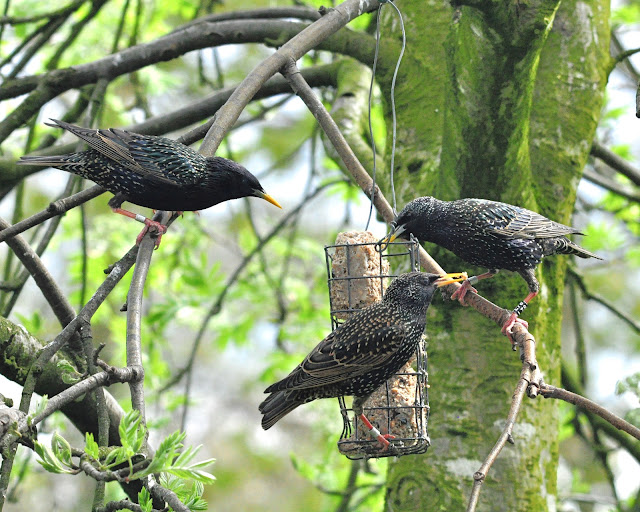The first juvenile Starling caught for ringing this morning was the 100th of this season and it was quickly followed by another 24. Productivity seems to be good despite the cold start to the spring and many pairs have 4 juveniles in tow. I haven't had time to total up the number of colour-ringed adults that have been resighted since 21st April but it is at least 130 and in addition another 40 new adults have been ringed and colour-ringed for the RAS project.
 |
| A typical scene on the lawn taken through the window. A similar number of birds were feeding on the suspended fat block and bird table out of the shot |
 |
| Melt 6 blocks of dripping in a large jam pan. |
 |
| Add about 7 margarine tub size scoops of meal worms. |
 |
| Then add about 20 crushed shop bought fat balls. |
 |
| Mix well until you have a nice even consistency and fill old margarine tubs to form blocks. |
 |
| The result is yummy if you're a Starling and should be given how much it costs. |
The current run of sunny weather has resulted in a few of the young Starlings flying into windows from time to time and one of my neighbours upstairs windows in particular. Thankfully the young Starlings don't fly that fast so there haven't been any injuries or fatalities or at least none that I am aware of but they have certainly left their mark on the glass.
That's all for now as I have another batch of fat blocks to make and lots of other stuff to do.






